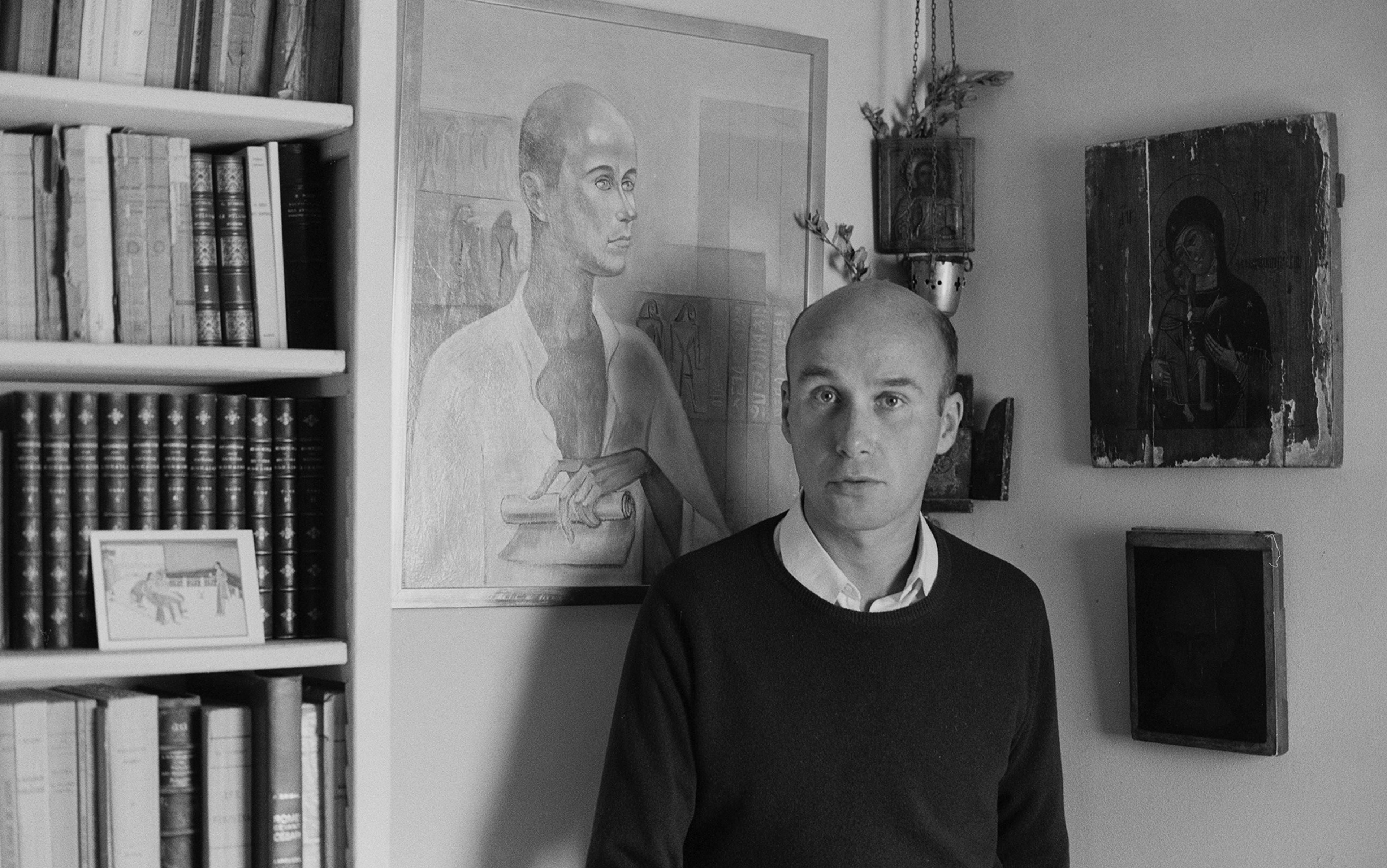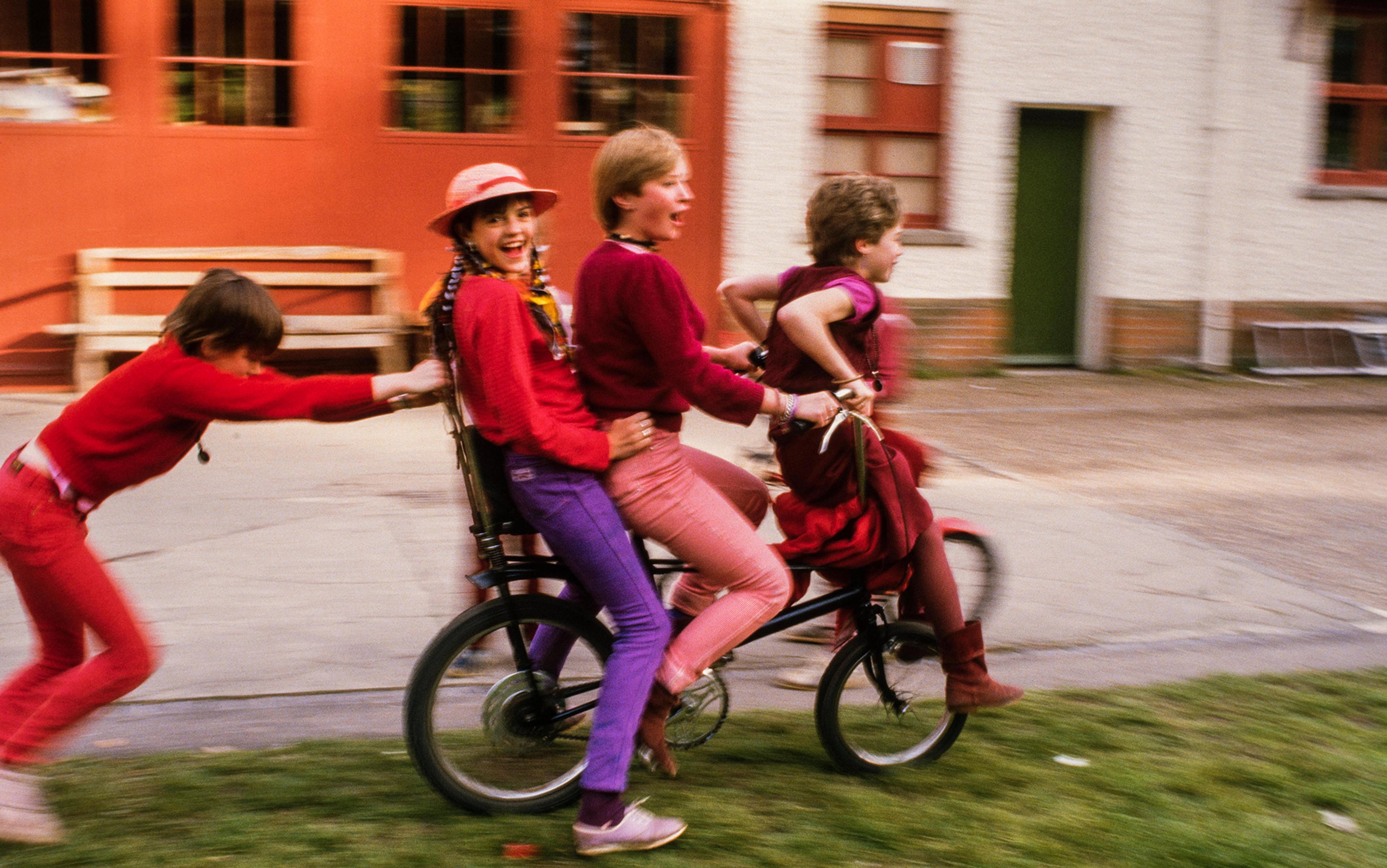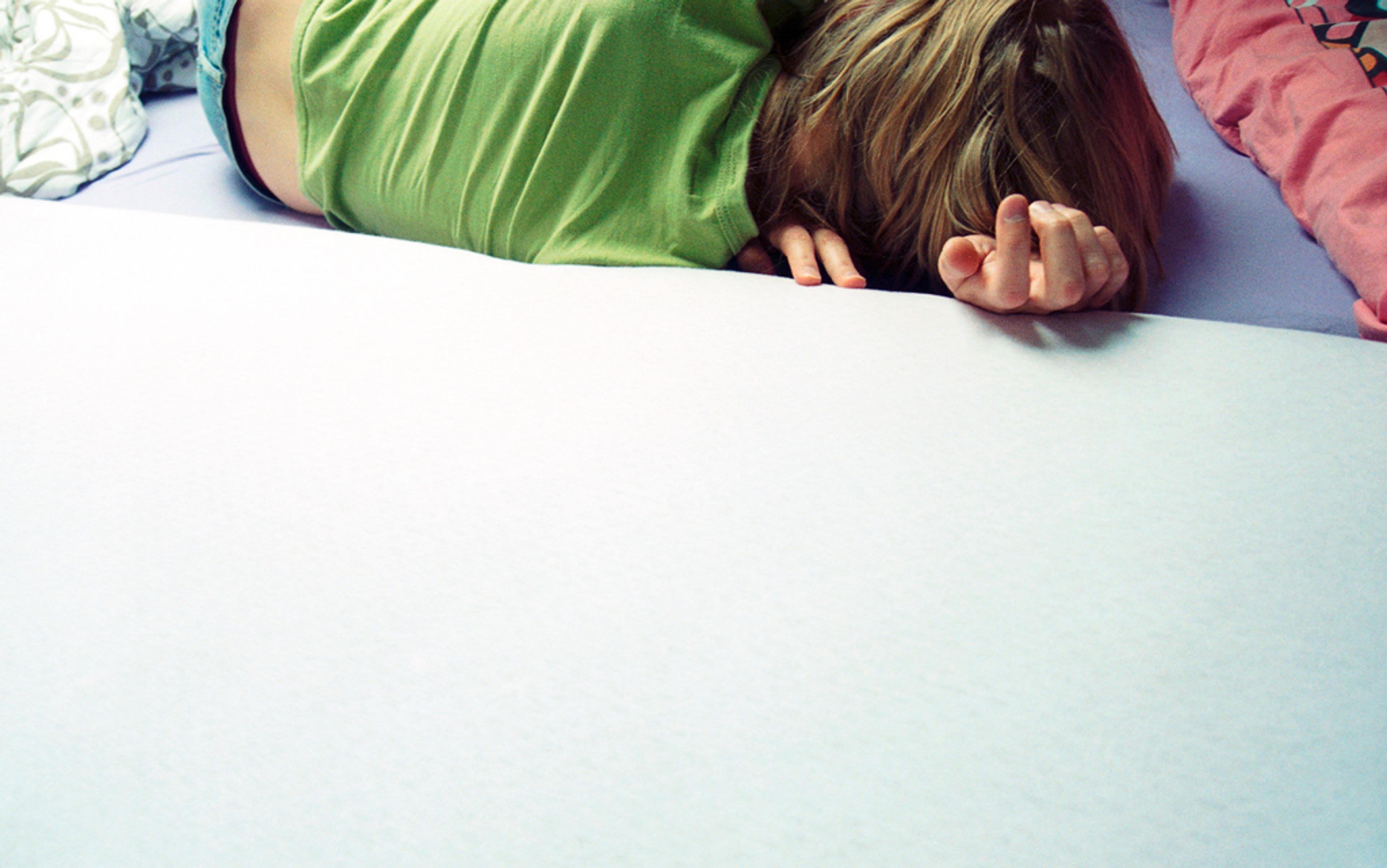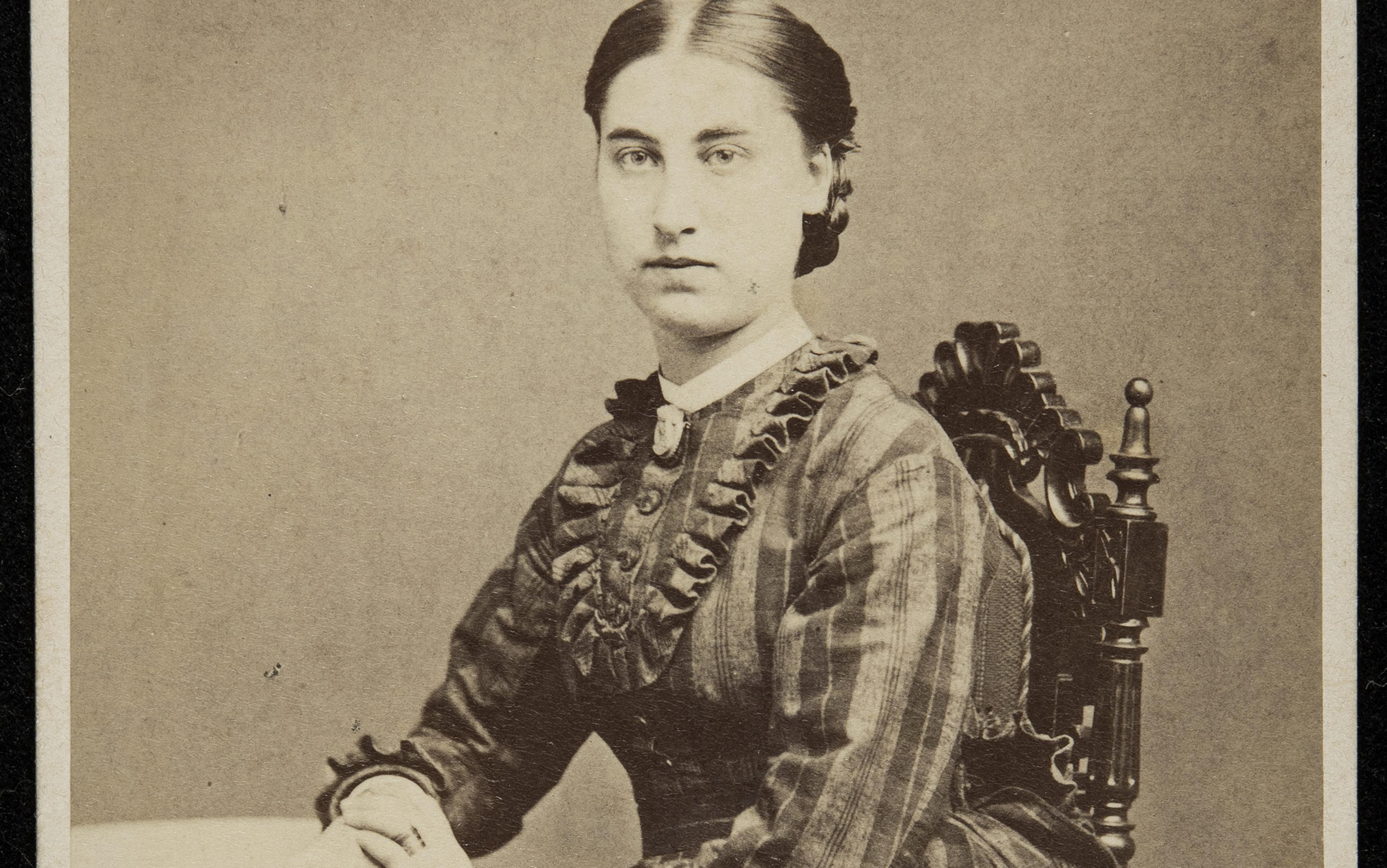Four children sit on a rockery by an ornamental pond in an English family snap. Someone has written ‘summer 1976’ in biro on the back. I am the oldest in the picture. I am nine. My parents moved us that July to the countryside below the Yorkshire Dales, and this is a photograph of us in our new garden. We had an acre of land, a willow tree, beds of roses and a pretend wishing well with a wooden roof and a dangling rope and bucket. It was idyllic, my father said, but it didn’t feel that way.
I’d believed in the romance of the country. I had read the Little House on the Prairie novels by Laura Ingalls Wilder, and I asked for a long party dress with a lace-trimmed pinafore over it for my birthday. But when I tried to be like Laura in the books, things kept going wrong. On one of my long solitary walks I wandered into a field full of tall, glowing yellow flowers, tipping my head back and reaching out my hands to brush against them like a girl I had seen in a TV advert. I shut my eyes and breathed. The smell and a sticky feeling on my fingers made me open them. Pollen coated my dress, staining it. My hands stank of cooking oil. This was a rape field, I learned afterwards. When I walked the other way, down our lane, the path was barred by a locked gate decorated with a neat row of severed rats’ tails across the top bar, each bloody stump with a nail through it. The rumour went round our tiny village (no shop, no pub, 20 houses and an ancient church) that there were newcomers, and the local boys started hanging around, watching for me and my two little sisters whenever we ventured out. One of them climbed up a tree and pissed a perfect arc over our heads to catch our attention. ‘You,’ he shouted down, grinning, ‘come and meet me down by the river. What are you scared of? I’ll not try and fuck you.’
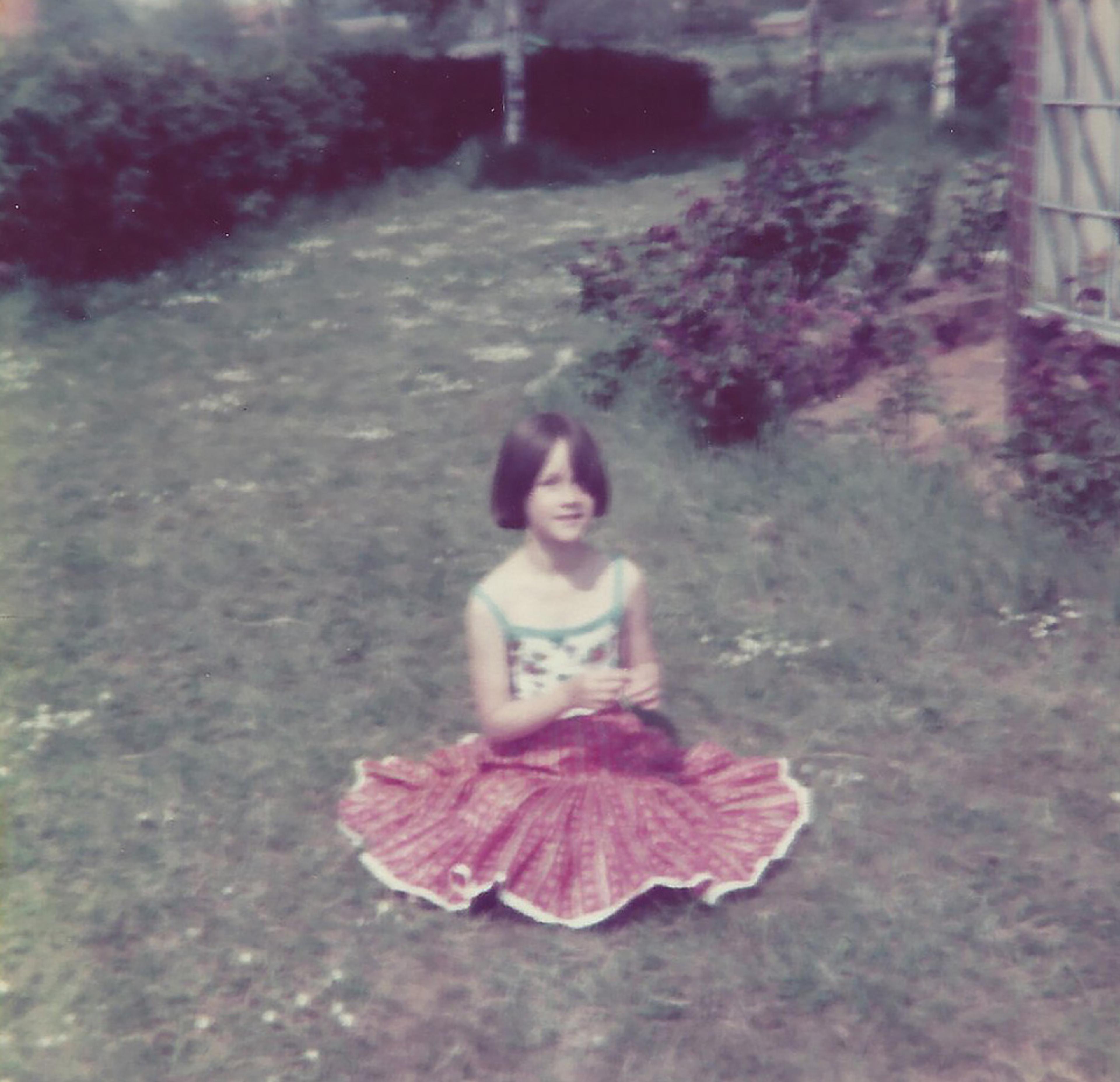
The author c1976. Image courtesy of the author
And then there was our house. The people who sold us the place ran it as an old people’s home and were do-it-yourself fanatics. They’d replaced all the solid doors inside with patterned glass, to give the illusion of privacy but so that they could watch the residents. The bathroom wall was made of thick, coloured-glass bricks, bright as boiled sweets. There was a feeling in the house I did not like and could not name. In every room you sensed eyes on you, making you feel exposed and out of place, like an insect on a tablecloth.
‘Why did you make me come here?’ I shouted this at my mother. I would never dare to say such a thing to my father. I was afraid of him and a little in love with him – and so she bore the brunt of my anger. I threw her favourite mug at her, which shattered. And I yelled. ‘I hate it here!’ She explained that we had had to move because Leeds had become ‘too rough’. She didn’t say that a man was killing women where we used to live.
My parents bought their first home in Leeds: a small modern box on an estate opposite Roundhay Park. When we passed the Gaiety pub, driving up Roundhay Road every week, I used to look out for its signs: two of them, one on either side of the building. The lettering reminded me of the circus, its jaunty, bright-red font spelled fun to me. I wished I could see inside, imagined bright lights, glitter and pop music. I didn’t know that it had a stage in its bar with a daily strip show: women performed while men downed lunchtime pints. The customers, for the most part, were sex workers and their clients.
Emily Jackson, 42, was picked up outside the Gaiety in January 1976, stabbed 52 times, stamped on and dumped. Opposite our old house in Roundhay Park, in May that same year, Marcella Claxton, 20, was hit repeatedly with a ball pein hammer. She survived, but they had to operate on her brain to save her life, sewing her up with 54 stitches. She was pregnant, and her unborn child died. When Peter Sutcliffe was finally caught, four years later, he was disgusted that the police believed he’d wanted to have sex with Claxton, who is Black and has learning disabilities. After all, hadn’t they derided her themselves? The police took little notice of her immensely brave work with them to construct a photofit of his face – so accurate it might have been sketched from one of the snaps in the Sutcliffe family album – officially linking him to the attack only after he confessed to the crime himself.
But that was in the future. ‘Hey, love?’ Sutcliffe would call out across the street in his soft, high voice, unthreatening and familiar with its Yorkshire accent. If she was a working girl, he would ask for business, offer to give her five pounds. If not, he would pay her compliments, make conversation. This was perhaps how he approached Jayne MacDonald, 16. She’d only recently left school and taken a job in the Grandways supermarket where we bought our sweets when we went to the Clock Cinema, my littlest sister dressed in her pink party dress with a ribbon sash, as such outings were a special occasion. One night in June 1977, he saw MacDonald walking home. He hit and stabbed her and left her to die alone in an adventure playground.
My mother was obviously failing. But I would be the perfect woman
On our school bus out in the countryside, where we’d moved for safety, a girl named Kerry from the next village told me she wanted to run away but couldn’t because of ‘the Ripper’. She’d be on that train to Leeds with her saved-up pocket money tomorrow, tonight even, if she wasn’t scared that he’d get her. I hate it here, she said, kicking the seat in front, where the smaller kids were. I was surprised she felt the same as me, because I’d been to Kerry’s house once for her birthday party and it was like Wonderland. Their TV was colour, and they had central heating. When night fell and the windows turned black, you could press an electric button and the curtains would glide shut to keep out the night. Her parents bought the place to try and mend things, but even this perfection did not make any difference: just like my parents, they were falling apart. Just like mine, her father was having an affair. ‘She’s a dirty bitch,’ Kerry said about the other woman.
My mother, too, had a name for the person my father was seeing, only she was politer: ‘Your bloody fancy woman,’ she said. Mum was respectable, a wife who worked as a teacher in the day, and cooked and sewed and cleaned at night, and never went out alone; so in that sense, I thought, she didn’t deserve it. And yet, she must have done something wrong otherwise my father wouldn’t be so angry with her. I took to making him the full English breakfast he liked (brought up in poverty, neglected, beaten, this kingly breakfast was a sign of how far he had come). My mother was obviously failing. But I would be the perfect woman.
At night, I peered through all the glass doors in our house, in turn, to see who might be on the other side. I checked every lock seven times. This was my magic number, if I did it the right way, we would all be safe. If I didn’t, something bad would happen: a man would appear, press his face against the glass searching for me. I did this counting and checking into my early 20s. Even so, I became a young adult who was reckless with myself, chose men who were careless of me.
When Martin Amis wrote about the effect of reading about the terrible crime of the Holocaust, he described it, unforgettably, as a sense of ‘physical infestation’: the feeling in the body of an invasion of an unwelcome entity, breeding and burrowing. In the case of Peter Sutcliffe, his crimes affected many women, profoundly, in the body; his victims, who suffered terribly and often died from the full force of his violence, and tens of thousands of other women who lived with daily bodily restrictions because of him. There are vox pops from the mid- to late-1970s, when he was at large, conducted by journalists, in which women said they changed their habits, curtailed their social lives and wouldn’t even let their children play outside. There are films of the ‘Reclaim the Night’ marches, which began in Leeds in 1977, showing women walking with banners and torches, to face down suggestions by the police that they should confine themselves to their homes after dark in response to Sutcliffe’s crimes.
The police were only reiterating a belief that ‘outside’ was the danger zone. The now-irredeemably tarnished sex offender Jimmy Savile appeared in British public information films of the early 1970s (when he was just a popular entertainer and his crimes were still unknown) to advise the wearing of seat belts, saying that terrible things were ‘going to happen to a lot of you ladies’. He said: ‘You’ll be shopping, collecting the kids, going to the launderette and, for some of you, the face you start out with in the morning won’t be the same face you end up with by the evening.’ His nasal voice carried over a photograph of a young woman with a black eye and a seam of stitches snaking from her brow over her scalp. And in the ‘Charley Says’ series of public information cartoons of 1973, the strange man in the park is the danger that threatens the child.
In the new house with its glass doors, the confusion between the danger outside and inside was complete
In reality, the threat of violence was much closer to home: the infestation was inside. It hijacked the psychological life of women and – this is less written about – those who were children at the time. For them, what was happening on the streets of Leeds, Bradford, Huddersfield, Halifax, Manchester coloured their childhoods with fear and, afterwards, shaded their pictures of the past. Yes, there was a frenzied reporting of Sutcliffe’s crimes, beamed out from bulky TV sets squatting in the corners of living rooms and filling newspapers spread over breakfast tables. But as identified by the English writer and human rights activist Joan Smith (who was a news reporter in Manchester in the late 1970s), there was a ubiquity and acceptance of violence towards women, its presence part of the texture of everyday life, in thought, language and action: ‘the world is full of men who beat their wives, destroy their self-respect, treat them like dirt’, she wrote in Misogynies (1989).
In my new childhood house, with its glass doors, the confusion between the danger outside and inside was complete. You simply didn’t know where safety resided. I had a recurrent dream at the time, and have had ever since, in which I am running from room to room, panicking and trying to close windows, lock doors, to try to prevent a menace from entering our home. Then I realise: he is already here.
One day during the summer of 1976, my mother locked the front door to keep my father out. He was raging and she was frightened. I saw his fist shatter the glass pane at the top, and his arm angle down through the shards. It looked supernatural, as if detached from his body. Like something out of a horror movie, his fingers scrabbled for the key she’d forgotten to remove from the lock. I could not move. Could not stop him. Another day, he pushed her up against the cooker and pummelled at her like a boxer. She was weeping, but it was his face – intent and red with fury – that looked like Mr Punch. There was nothing I could do but watch. One day my mother went out with a black eye and when my friend asked: ‘What happened to your mum?’ I said: ‘She banged her face on a cupboard.’ ‘No she didn’t,’ my friend said. My mother told me, years later, that my father had hit her for the first time when she was pregnant.
Children grow up. They make choices to ensure that they feel safe in their own homes – although, as we know, experiencing trauma as a child can skew your sense of self, regardless of how hyper-aware you are of danger signs, leaving you intensely vulnerable to predators. As Emily Brontë understood long ago, violence breeds violence. In her novel Wuthering Heights (1847), set in Yorkshire’s wild moors, the violence perpetuates itself down the generations, ignited by a man cloaked in the romantic myth that men filled with rage are the most attractive, their ‘wildness’ code for desirable masculinity. Brontë was entirely without illusion about the true nature of men like Heathcliff, and she has his soon-to-be-wife, Isabella, set straight by Cathy. ‘He’s not a rough diamond,’ Cathy says, ‘he’s a fierce, pitiless, wolfish man.’ As the American radical feminist Andrea Dworkin noted in an essay that had a profound effect on my understanding of how male brutality can be minimised, endured, Brontë refused to allow Heathcliff to be valorised in the name of love.
The fantasy of the violent man as a romantic and misunderstood figure seems to have been part of Sutcliffe’s self-understanding, according to Gordon Burn, who wrote a superb account of his life in Somebody’s Husband, Somebody’s Son (1984). Wooing his future wife, Sonia Szurma, in the early 1970s, Sutcliffe took her on long walks on the ‘moor-top’ above Bingley, their home town. They were both uncomfortable socially, silent and awkward in company, but they were at ease alone together in that wild place among the rocks and heather, like Cathy and Heathcliff.
As news of Sutcliffe’s death came at the end of 2020, a slew of press coverage gave the lie to any idea that the past is as distant and strange to us as platform shoes and perms, exploding the myth that there were bad men who prowled outside in the dark but things are much better now. If anything, the revisiting of Sutcliffe’s crimes and the ripples of fear they stirred across the north of England, in the media, and in my memory, seems to me less a break in time, and more a telescoping shut, colliding that period of the 1970s with today. The telling of Sutcliffe’s story back then – the monster-making of him as the ‘Ripper’ – masked the brutality that ordinary men perpetrated in ordinary homes, while his death, now, does not signal any end to acts of violence against women, except for his own.
In the shadow of the global pandemic, a second pandemic has damaged lives and mis-shaped the psyches of children. Phumzile Mlambo-Ngcuka, the executive director of UN Women, has said that COVID-19 caused ‘a perfect storm for controlling, violent behaviour behind closed doors’, making access to help much more difficult in countries where domestic abuse is now a crime. In the one in four countries that have no such protective laws, the situation is far worse. Violence breeds violence. Indeed, Sutcliffe himself was a victim of domestic violence as a child. His father, a domineering and controlling brute, by all accounts, would terrify his wife and children, and hit them until they were covered with bruises.
She still bears the scars of Sutcliffe’s attack on her body and in her mind
In a new and dangerous twist, the rising financial insecurity of many women during the current pandemic and their concomitant loss of autonomy has trapped many of them inside the home in the company of their abusers. And this in the age of an explosion in the reach of brutal and degrading pornographic images of women. Everything you might desire is accessible from the comfort of your home. You can simply lock the door and shut your curtains to keep the world out, enjoying a development that Sutcliffe – who fed his fantasies with ‘mucky magazines’ ferreted out of the few ‘private’ shops that existed outside London then, and with visits to the cold, dilapidated streets of Northern red-light districts – could have only dreamt of.
Marcella Claxton is now in her 60s, a mother and grandmother. She has lived to see the ignominious death of Sutcliffe: imprisoned, solitary and un-mourned. The press returned to Leeds to interview her, asking how she felt now he’d gone – their cameras snapping at her in Roundhay Park, which stretched around her, green and peaceful. Today, she looks as strong as the weathered tree she stands next to in one of the pictures – upright, solid and indomitable – but she still bears the scars of Sutcliffe’s attack on her body and in her mind. As she reminds anyone who asks her for her story, she might have survived Sutcliffe but he took a life from her nonetheless: that of her unborn baby. Her ability to mother her other children was hampered by the headaches, dizziness and blackouts she has suffered ever since.
When I was nine, we moved away from Leeds, far away to a house in the country because, we were told, a bad man was waiting to hurt women in those urban streets at night, in the deserted parks and playgrounds. I wanted, with a child’s romantic passion, to believe in the kindness of nature and happy-ever-after and, above all, that I was safe. Yet already, that summer, I knew better, and I have known ever since, that for women there is sometimes no escape from the darkness that is inside.


